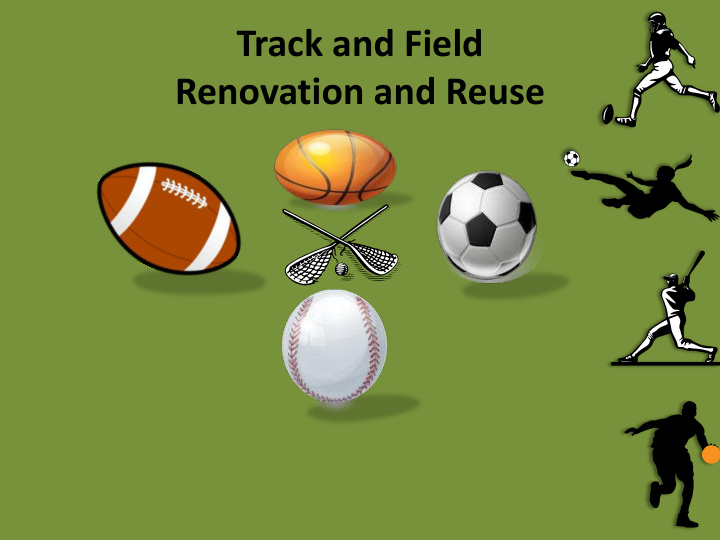



Track and Field Renovation and Reuse
Capacity, Efficiency, Equity and Safety • Need for more space – No room for expansion – 27% Capacity increase in the same footprint – Parity among events – Student & Athlete safety issues – MIAA Requirements
Capacity, Efficiency, Equity and Safety • Current conditions are unsafe – Field dips, track is heaving and cracking in areas – Compacted soil – Limited field “run - off” for athletes – Lighting is poor (for small ball play) and inefficient
Capacity, Efficiency, Equity and Safety • Costs related to lighting, transportation and other expenses for current conditions make this effort cost effective for long term – Modern “sporting specific” lighting system – Larger events and tournaments can be held in the stadium – Revenue and rental opportunities – Lower maintenance costs, smaller environmental impact
School Committee Proposal
The Costs – Borrowing $2,210,000 • With interest cost is approximately $2,850,000 – $190 per student per year of borrowing – $362 per household; $24 annually • Each Town will contribute through assessment formula – Bolton - $45,000 – Lancaster - $50,000 – Stow - $60,000 • Timing is good for borrowing; retiring debt • No tax impact related to the project • Towns will decide if there is to be a debt exclusion
Conclusions • Who will benefit from this project? • All students (PE classes and academic classes) • Community (community asset and can be used by the public) • Student Athletes (all outdoor sports) • Clubs and events (additional opportunities for all) • Field Capacity Increase of 27% • General Enhancement to Turf Quality • Enhanced Student-Athlete Safety • Reduced Maintenance Costs • Enhanced Environmental Sensitivity
Recommend
More recommend